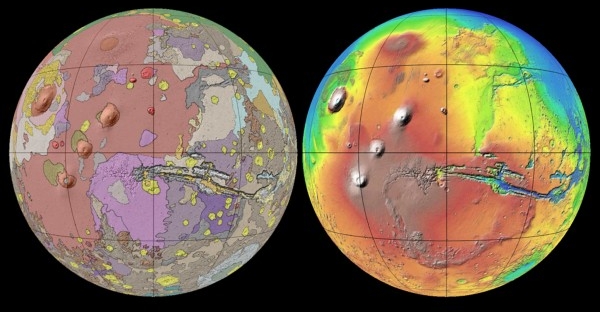Voyager 1 might not have left the solar system
The uncertainty of science: Two scientists dispute the finding this year that Voyager 1 has entered interstellar space.
Voyager has yet to detect what scientists long predicted would be the calling card of interstellar space: a shift in the direction of the magnetic field. Scientists had expected the probe to encounter particles under the influence of the interstellar magnetic field draped over the outer shell of the heliosphere, inducing an abrupt shift. But the direction has remained stubbornly constant, and researchers can’t explain why. “This whole region is a lot messier than anyone dreamed of,” Christian says.
It’s a bit too messy for George Gloeckler and Lennard Fisk, Voyager scientists at the University of Michigan in Ann Arbor. They wondered whether the magnetic field and particle density conditions measured by Voyager could exist within the heliosphere. In a paper accepted for publication in Geophysical Research Letters, Gloeckler and Fisk argue that the outer heliosphere could allow an influx of galactic particles from beyond the bubble that would explain the density measurements.
The researchers’ analysis includes a way to definitively test the idea: If Voyager 1 is within the heliosphere, Gloeckler and Fisk note, then it should still be at the mercy of the sun’s magnetic field. If that were the case, within a year or so, Voyager should detect a 180-degree flip in the field’s direction, a regular occurrence caused by the sun’s rotation. “If that happens,” Gloeckler says, “Len and I will have a big celebration.”
I suspect that both sides are right, and that the transition into interstellar space is simply very complex. Some data will say the spacecraft is outside the solar system, while other data will say it is inside.
The uncertainty of science: Two scientists dispute the finding this year that Voyager 1 has entered interstellar space.
Voyager has yet to detect what scientists long predicted would be the calling card of interstellar space: a shift in the direction of the magnetic field. Scientists had expected the probe to encounter particles under the influence of the interstellar magnetic field draped over the outer shell of the heliosphere, inducing an abrupt shift. But the direction has remained stubbornly constant, and researchers can’t explain why. “This whole region is a lot messier than anyone dreamed of,” Christian says.
It’s a bit too messy for George Gloeckler and Lennard Fisk, Voyager scientists at the University of Michigan in Ann Arbor. They wondered whether the magnetic field and particle density conditions measured by Voyager could exist within the heliosphere. In a paper accepted for publication in Geophysical Research Letters, Gloeckler and Fisk argue that the outer heliosphere could allow an influx of galactic particles from beyond the bubble that would explain the density measurements.
The researchers’ analysis includes a way to definitively test the idea: If Voyager 1 is within the heliosphere, Gloeckler and Fisk note, then it should still be at the mercy of the sun’s magnetic field. If that were the case, within a year or so, Voyager should detect a 180-degree flip in the field’s direction, a regular occurrence caused by the sun’s rotation. “If that happens,” Gloeckler says, “Len and I will have a big celebration.”
I suspect that both sides are right, and that the transition into interstellar space is simply very complex. Some data will say the spacecraft is outside the solar system, while other data will say it is inside.





